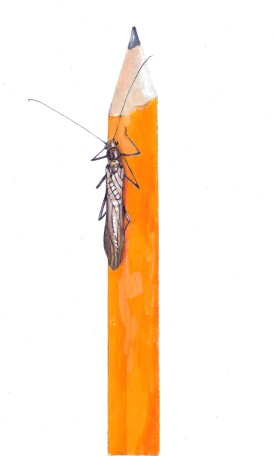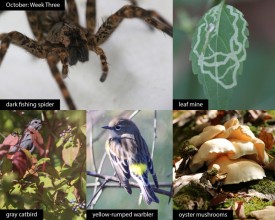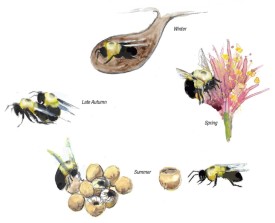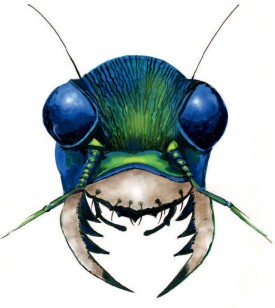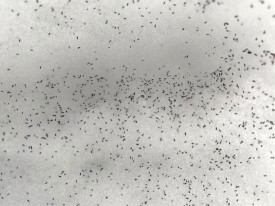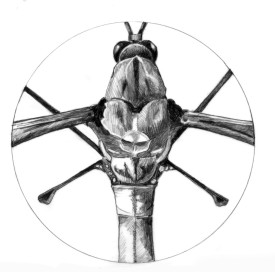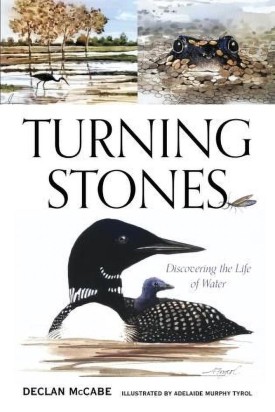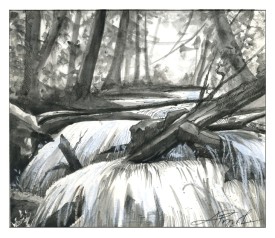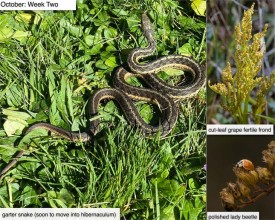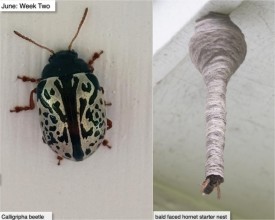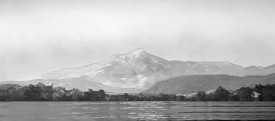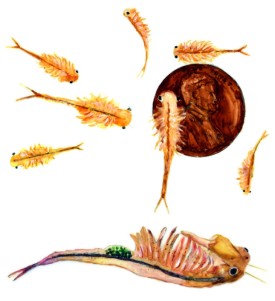If winter travels take you along the banks of a clean, rocky stream on a warm afternoon, chances are good you’ll encounter stoneflies (order Plecoptera) seeking out others of their kind by…
October: Week Three
This week in the woods, this dark fishing spider fell out of a wood pile and onto a piece of target-practice paper. Our area’s other fishing spider species appear near permanent bodies of water,…
Bumble Bees: Iconic and Essential
Bumble bees are culturally iconic and essential to our environment. While unwittingly inspiring classical music, soft toys, and jewelry, bumble bees pollinate flowers both obscure and important to…
Jumping Spiders
During my first lecture in front of a large room of students, a small spider put me – and my 220 students – at ease. As I flicked on the overhead projector, I spotted a ¼-inch…
Six-spotted Tiger Beetles: Springtime Sprinters
Many beetles are slow fliers and runners, but six-spotted tiger beetles (Cicindela sexguttata) are masters of speed. A metallic flash of green or sometimes blue may be your only glimpse of this…
Editor’s Note
People often tell us that they read each issue of Northern Woodlands cover-to-cover. I can relate. I was a cover-to-cover reader from the very first issue a friend placed in my hands, back in 2007.…
Ahhh-choo…?
While walking through the woods in northern New Hampshire this past week, we spotted several areas where it looked like someone had spilled ground pepper on the snow. What’s happening here?
Winter Crane Flies
On days when I drop off my wife at her dance class, I explore Red Rocks Park in South Burlington, Vermont. I meet dog walkers and a few hardy birders but as far as I know, I’m the only one out…
Turning Stones: Discovering the Life of Water $22.95
For focus, exercise, and pleasant distraction, scientist Declan McCabe takes frequent walks along Vermont's Winooski River. The brief trips provide solitude, grounding, and an opportunity to…
Fallen Logs Invigorate Stream Life
For 12 summers, my Vermont colleagues and I offered guidance to high school student and teacher teams who conducted research on streams as part of a National Science Foundation EPSCoR program. These…
November: Week One
This week in the woods, the landscape shows its skeleton, and we can see the true ridgeline beneath the now-leafless hardwoods. Also more apparent during the beginning of this bare month are goldenrod…
October: Week Two
This week in the woods, Editor Meghan McCarthy McPhaul encountered this garter snake making its way across a field, perhaps on its way to winter lodging. The snakes typically move into hibernacula…
Cicada Killers
Picture this: you are a single mother, and to ensure the success of your children, you’ll have to immobilize a still-living animal almost twice your weight and haul it back to a tunnel you dug…
Turning Stones Book Celebration with Declan McCabe
When: June 20th 2024 7:00 - 8:30 PM
Where: at The Norwich Bookstore
291 Main St, Norwich, VT 05055
Turning Stones looks at the mysteries and life found in fresh water. The essays in this volume explore the diversity of life that depends on water and examine a range of life forms before looking to…
June: Week Two
This week in the woods, we enjoyed our office backyard “moth ball” with lepidopterist JoAnne Russo, who identified a whopping 86 different moth species flitting through the night sky of…
Chittenango Ovate Amber Snails
Intolerance of disturbance, specific habitat requirements, and narrow distribution: these are characteristics that threaten species with extinction. Unfortunately, the Chittenango ovate amber snail…
The Tale of a Lake Tsunami
The sharpest contrast between rivers and lakes is in water movement. While rivers flow inexorably downhill, lake water movement is more subtle. Anyone who has weathered a storm on a lake, however, can…
April: Week Two
This week in the woods, one of our most exciting finds was, by design, not very exciting to look at. This is a well-hidden active barred owl nest, a status we realized a few seconds after taking this…
Living Fossils in the Woods
More than 400 million years ago, when invertebrates ruled Ordovician seas, the Anostraca, or fairy shrimp, evolved within the branchiopod crustaceans. They moved from oceans up through estuaries to…
Turning Stones with Declan McCabe
Writers in the Woods, a companion series to our Community Voices interviews, focuses on authors and artists whose work relates to the forests of the Northeast. For the first interview in the series,…


